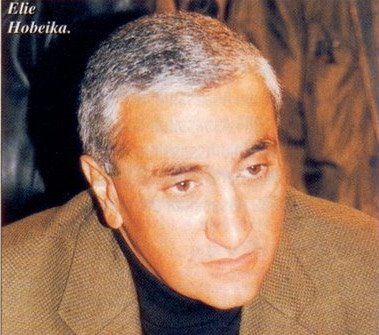
Secret Cold War CIA project placed Trojan horse codes in Soviet targeting system...?
http://www.isgp.eu/organisations/Le_Cercle.htm#160
WMR has learned of a super-secret CIA project that surreptitiously placed a hidden encrypted code into the firing codes that were designed to authorize the launch of Soviet submarine-based intercontinental ballistic missiles (ICBMs) during the Cold War.
In the early 1980s, the CIA embarked on a risky highly-classified operation to place software bugs, known as Trojan horses and logic bombs, into software programs, as well as computer chips and other firmware, that the KGB was acquiring illegally from the West. President Ronald Reagan personally authorized the secret program.
According to several written accounts, the CIA's point man for the operation was Dr. Gus Weiss, who suspiciously plunged to his death from the Watergate complex in Washington, DC on November 25, 2003, after publicly condemning the U.S. war against Iraq.
The CIA program involved the selling of manipulated software and firmware to several KGB "Line X" officers tasked with obtaining high-technology components from the West. One KGB Line X agent arranged to buy a software program from a Canadian company that was to be used for the 2800-mile long Soviet Trans-Siberian Pipeline. However, the software program contained a Trojan horse that allegedly caused the pipeline's Supervisory Control and Data Acquisition (SCADA) operational and control system to malfunction, resulting in a massive 3-kiloton explosion in March 1982 in western Siberia. However, there is an ongoing controversy between ex-CIA officials and Russian experts on what actually caused the explosion that disrupted the Trans-Siberian pipeline. The ex-CIA officials contend the explosion of the Urengoy-Surgut-Chelyabinsk was so powerful it was picked up by U.S. detection satellites in space. However, the KGB contends that an explosion occurred in 1982 but that it was on a pipeline connecting the Urengoy natural gas field in western Siberia to Chelyabinsk and occurred near Tobolsk and only shut down operations for one day. Some observers believe the story of the pipeline explosion from CIA sabotage was hyped by the late New York Timescolumnist William Safire as part of a CIA public relations operation.
According to the July 8, 1983, Toronto Globe and Mail, the Calgary-based engineering firm, Cov-Can Control Systems, Ltd., was installing SCADA software on the Trans-Siberian pipeline developed by Compagnie d'Informatique Militaire, Spatiale et Aeronautique (CIMSA) of France and installed on Mitra computers built by Societe Europeenne de Mini-informatique et de Systemes (SEMS), both subsidiaries of Thomson-CSF.
No other Canadian firm is mentioned as being part of the Trans-Siberian pipeline's computer operations. The Globe and Mail article states; "CIMSA, based in Velizy, west of Paris, has set up special project offices that it is sharing with Cov-Can - the only Canadian company involved in the pipeline's computerization." However, there is an interesting American connection to Cov-Can. A part-owner of Cov-Can at the time of the Soviet deal was Morris Covington, the president of CRC Bethany International Inc. of Houston, the software division of Crutcher Resources Corporation. After the U.S. State Department refused to grant an export license to sell computer software to the Soviet pipeline project, Covington arranged the deal between Cov-Can and CIMSA. After initially being pressured by the United States to refuse an export license to the Soviets, the Canadian government finally relented and a license was granted by the Canadian External Affairs Department after six-months during which time the secret Trojan horse deal between the CIA and the Canadians was being negotiated.
WMR has learned from well-informed sources of another more classified CIA program -- one that placed Trojan horses into the missile firing authorization codes of Soviet submarine-based nuclear-tipped ICBMs. During the same time frame as the CIA transfer of corrupted software to Line X KGB agents, a Soviet submariner who excelled in mathematics, while on patrol on a NATO-designated "Yankee"-class nuclear submarine, decided to examine the encrypted firing codes for himself. The codes were encrypted so submarine crewmen, including the commander and missile officer, could not determine the targets for the nuclear warheads. However, the math whiz conducted a series of unauthorized cryptanalysis attacks on the encrypted code and, to his surprise, discovered the Soviet missiles were all targeted at sites inside the Soviet Union. WMR learned from our sources that the entire matter was hushed up on orders from the Kremlin and KGB and the young submariner was never heard from again.
The mere idea that the CIA could have corrupted the Soviet nuclear command and control system and the super-secret nuclear launch firing codes sent shock waves throughout the Soviet military and intelligence hierarchy. In the United States, nuclear attack authorization codes are developed by the National Security Agency (NSA) in a ultra-classified environment. In the Soviet Union, the nuclear strike authorization codes were developed by the cryptographers in the top secret Sixteenth Directorate of the KGB. For the CIA to have changed the targeting information so launched Soviet missiles would have hit the Soviet Union instead of their targets in the West would have taken a combination of technical stealth and well-placed agents inside the Sixteenth Directorate.
Victor Makarov was a Western agent inside the Sixteenth Directorate. During his time in the Sixteenth Directorate working as a cryptanalyst, Makarov passed classified KGB information on Soviet code-breaking and code-making abilities to Britain's MI-6. Makarov was eventually sentenced to a labor camp after being betrayed by a colleague in 1987. After the fall of the Soviet Union, Makarov moved to Britain where he was promised a pension by MI-6. The British intelligence agency reneged on its deal and Makarov was forced to protest in front of Parliament in London.
The history of the submarine Cold War between the United States and Soviet Union continues to harbor a number of secrets to the present day. Neither side is anxious to see any of these secrets reach the front pages of American or Russian newspapers.
- Interview with Canadian ambassador who worked for the CIA. Iran’s Press TV has published an extensive interview with Ken Taylor, Canada’s former ambassador to Iran, who recently admitted that he secretly worked for the CIA in the late 1970s, after the US embassy in Iran was taken over by students during the Islamic Revolution. Part one of the interview is here. Parts two and three here, and parts four, five and six here.
- US Pentagon’s black budget tops $56 billion. About $56 billion of the US Defense Department’s publicized 2010 budget goes simply to “classified programs” or to projects known only by their code names, like “Chalk Eagle” and “Link Plumeria”. That’s the Pentagon’s black budget, an it’s about $6 billion more than last year.



